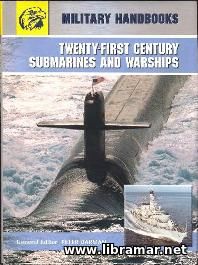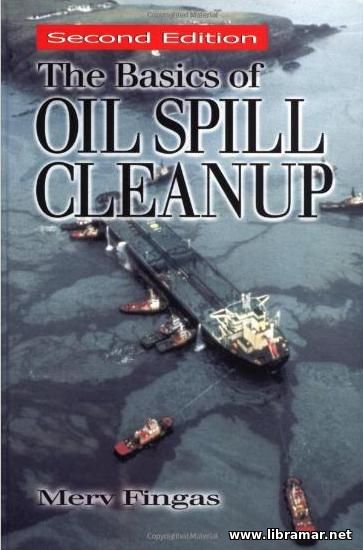Personal Safety On Board — The Shipboard Management Role

Safety must be essential factor in all ship operations. Ship owners need to make a profit, but the best way to do that today is by operating safely. The senior management team on the ship needs to put the health, safety, and security of their crew above everything else. To achieve that, safety must be managed effectively.
The ISM Code makes safety management essential. But safety management makes good sense in both human and commercial terms. For all shipping companies, a history of shipping incidents and accidents damages their reputation and leads to the loss of business and further financial consequences.
It may seem that accidents happen at random, but the researches show that there appears to be a relationship between near misses and serious accidents. The more near misses, or hazardous occurrences that happen, the more minor or serious accidents occur. Proper evaluation of a near miss or hazardous occurrence reports and making appropriate changes in procedures will reduce accidents and contribute in managing safety on board.
There are many components to successful safety management and obvious one is good training and familiarization with the company’s safety management systems. Another one is proper maintenance, including making sure that all maintenance is correctly carried out and logged. Motivation and leadership is also vital. If safety matters to the senior officers, everyone on board will notice that; they will then make safety a high priority in their own activities.
This leadership is an essential part of another component – the development of the safety culture. The senior officers must make  it clear that they are committed to the company’s safety procedures for it is their attitude to safety that determines the safety culture of the ship.
it clear that they are committed to the company’s safety procedures for it is their attitude to safety that determines the safety culture of the ship.
Finally, there are the safety management procedures themselves – these shall be developed by the shore office in consultation with the shipboard management team based on their experience, risk assessment, and legal requirements. But the shore office’s responsibility does not end with creating good working procedures. They also have a responsibility to employ personnel of a suitable standard both at sea and ashore.
Most important of all, there shall be open communication and trust between the ship and the shore. The Designated Person Ashore under the ISM Code must ensure that everyone ashore and on board works together to manage safety. For safety management systems to be effective, they must be regularly reviewed to ensure continuous improvement.
Standards must be established and then implemented. The progress of this implementation must be followed and measured so compliance can be checked. The situation must be reviewed and changes made if the objectives have not been met.
The management team on board should never forget that they are part of a larger team that includes those ashore. However, the primary responsibility for day-to-day safety remains with the senior officers of the ship. They need o protect their crew from fatigue and stress – this can be done by carefully scheduling procedures, such as those when the ship is alongside.
Many procedures are subject to special safety considerations. These include entry into enclosed spaces, hot work and working over the side. There will be procedures for these but they still need to be managed for safety. Each step must be analyzed for hazard and steps taken to mitigate the risks. Once an operation is completed, the procedures need to be reviewed for any lessons that can be learned. It is essential that the safety management system promotes and takes account of the feedback from all the crew members involved.
Cargo operations are potentially the most hazardous activities on tankers; all these operations will be planned according to the company procedures. These will be based on the industry standards of best practice. Carrying out the pre-operation checks is essential for safety. The checks shall never be just a paper exercise. Good records must be kept of the cargo plans and the checking procedures.
Each operation must be schedules so that it does not conflict with another operation or its manpower requirements. Allowance must be made for crew rest time. It is often thought that it saves money to keep on working and finish early, but any accident will cost a great deal more than delaying a ship for six hours while crew gets good sleep.
Any change to the ship’s equipment, personnel, or operating procedures can increase the risk of an incident. The senior officers need to be aware of this possibility and will need to use the risk assessment techniques to evaluate any change to the procedure. Each part of the procedure needs to be analyzed for the risks and steps to reduce these risks discussed and decided. A formal assessment is prepared before the decision to go ahead with the task can be given.
If the hazards are serious and cannot be managed satisfactorily, then the Master may decide not to carry out the procedure. However, if the hazards are severe, but the risk can be mitigated, then it may be better to carry it out under different conditions. Perhaps, the shore office can provide extra resources. It may be possible to modify the task and reduce the risk by taking special precautions. Finally, if the hazards are minor and the risk is small, then the risk is manageable and the task can go ahead.
Before starting, a toolbox meeting is held where everyone agrees what is going to be done, who is going to do it, and safety is reviewed. The scheduling of the individual component tasks is governed by the permit to work system. Also, for all routine tasks the system of controlling work by permits to work remains the backbone of safe working practice on board.
The first line of defense against personnel injury is safety management procedure. PPE is your line of defense against injury. It is essential to always wear the appropriate PPE. An important tool in the management of safety on board and the development of safety culture is the safety committee that will include representatives from all the ship’s departments. All members of the committee should be encouraged to think for themselves and raise any topic related to safety.
The safety committee should organize and encourage the reporting of near misses as this identifies potential hazards and gets  all personnel thinking about safety. It is often found in shipping fleets that the ship that reports the most near misses has the lowest accident rate. A key individual in the safety committee and in the safety management onboard is the safety officer, whose overall objective is to support and promote a safety culture. His job is to support the safety efforts of the crew members but not to manage their safety for them.
all personnel thinking about safety. It is often found in shipping fleets that the ship that reports the most near misses has the lowest accident rate. A key individual in the safety committee and in the safety management onboard is the safety officer, whose overall objective is to support and promote a safety culture. His job is to support the safety efforts of the crew members but not to manage their safety for them.
The key part of the job will be administration of the safety management systems set up by the operator. Keeping these systems up to date is vital. Safety inspections will be a regular part of this job. The ship’s Flag State may require safety officer to carry out specific tasks and these must be complied with. The frequency of the inspections may be determined by the ship’s Flag State or possibly by the ship’s operator.
All areas of the ship accessible to the crew need to be inspected regularly. During an inspection, the safety officer should congratulate those he finds doing their job safely and wearing the appropriate PPE, and encourage others to improve their safety behavior. The Master and the safety committee must scrutinize the inspection reports. The results of these regular inspections must be logged, reported, and followed up.
The safety officer will also play an important part in organizing the safety drills. Regular drills will have a contingency plan based on risk assessment and this will provide the basis for planning them. All aspects of safety must be considered. The safety officer must ensure that the safety is the prime consideration in carrying out drills on board.
Another task which will always be part of the safety officer’s job is accident investigation. This will often be done together with the other members of senior management team. Accident investigation and reporting is an important part of the ISM Code. There are two separate parts of an investigation. First, securing the area and finding out what happened, answering the questions what, where, when, and who, as well as measurements, diagrams of the site shall be made. It is likely that the shore office will need to be informed early of any incident. There will probably be a need to interviewing the witnesses as soon as possible after the event.
The second part of the investigation is analyzing hat happened, answering t he questions why and how. The objective is to understand what went wrong and how the situation can be managed to prevent any further incidents. Accidents rarely have just a single cause. Both the immediate and underlying causes need to be identified and corrective action must be taken immediately. Longer term measures must be taken to ensure future prevention. The objective is to understand what went wrong and how the situation can be managed to prevent repetition of the incident.
Once the investigation is complete, that is only the start. The accident must be officially reported, always to the operator but often to the Flag State. The main purpose of the investigation is to prevent recurrence. So, the DPA may well inform other ships in the fleet of any investigation which will help them improve their safety management.
Once a major operation has been completed, it is always worthwhile to take the time to see whether the safety could have been better managed. Note that people who are in the best position to improve the safety or the procedure are those involved in carrying it out. A senior officer should chair the de-briefing meeting to ensure that all possible lessons can be learned. Everyone regardless of their rank shall be encouraged to stop any unsafe action they see taking place.
There are many ways to develop the safety culture. It depends on the wholehearted support of the top management both ashore and on the ship. It is vital that the shore office and the ship are both committed to the effective safety management of the ship. The successful development and implementation of the safety culture will depend on the senior managers on board. They must lead by example, communicate and listen to those around them, ensure that there are no barriers preventing the open reporting of the safety incidents and near missed, avoid blaming people but show that they are ready to address any causes of any incident.
The "Read Later" function allows you to add material to this block with just one click. Just click on the icon and read the articles that interest you at any convenient time.


